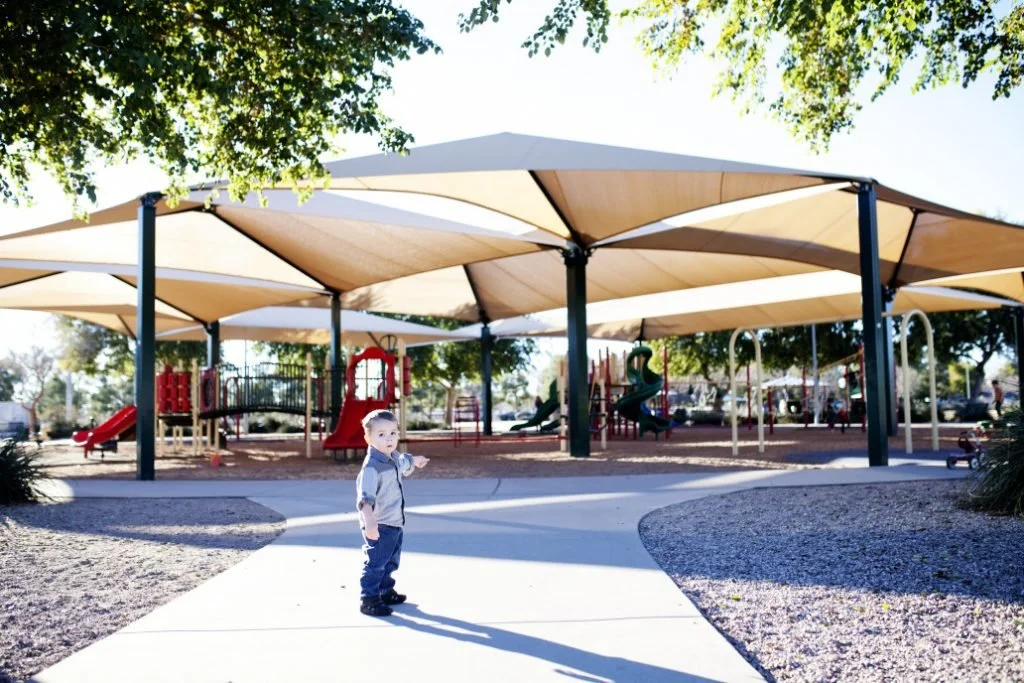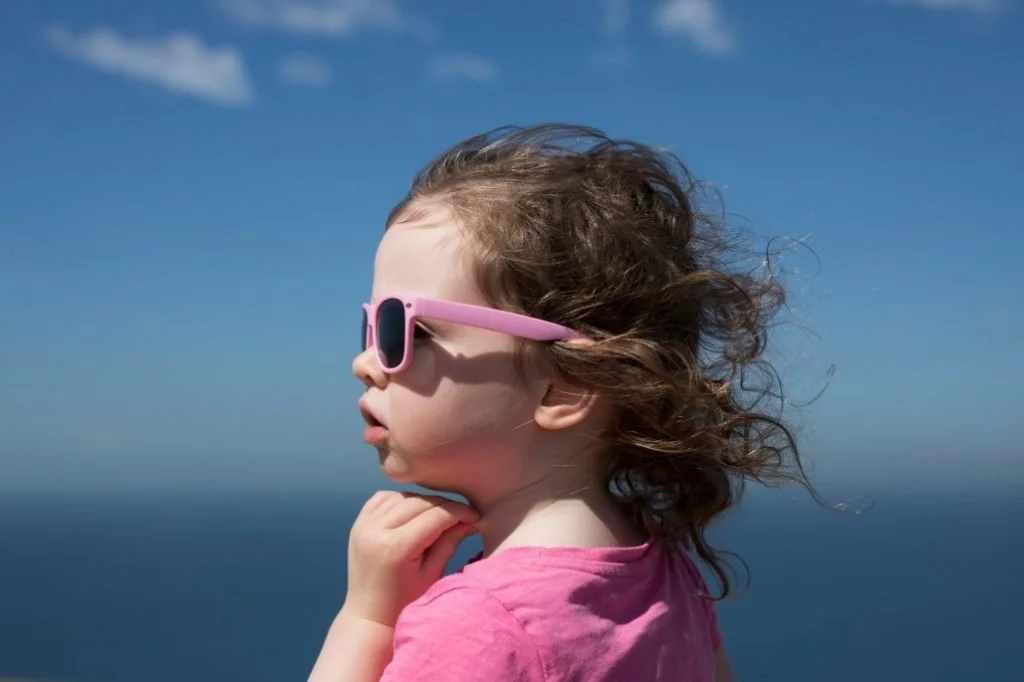Summer Sun and Preventing Burns!
Discover > Texas Mom Blog > Summer Sun and Preventing Burns!
In light of July being UV safety awareness month, Texas Mom Blog discusses sun damage and ways to prevent it. This article is for educational purposes only. Always consult your physician for any medical advice.
Holding down my kids long enough to slather the suggested golf ball-sized quantity of sunscreen over their skin is the funnest part of the day.
For them.
Who can writhe their slick selves out of my grip is a challenge my kids love to compete on.
4.5 hours later, we are all set to leave the house.
Jokes aside, the time and effort spent are worth it, because just one blistering sunburn and I am looking at more than a week of post-burn care and more long-term skin damage that could have been avoided.
Everyone is at risk for sunburn. However, children are undoubtedly more susceptible since most sun damage happens in childhood. A sunburn leaves the skin inflamed, red, and painful. In severe cases, it even causes fever, blistering, headaches, and chills. An online health survey of 2018 revealed that Texans living in rural counties were more likely to remain outdoors for prolonged periods of time and less likely to put on sunscreen compared to their urban counterparts.
Here are some ideas to prepare your family and yourselves for the summer sun!
Use a Broad-Spectrum Sunscreen With at Least SPF (Sun Protection Factor) 30
Whether the benefit of sunscreens and the chemicals they come loaded with outweigh the risk of sun damage is an ongoing debate. Personally, I like to minimize the use of products on my children’s skin (and mine), trying alternative options to block off harmful sun rays, but with the summer sun shining down on us quite fiercely and the kids basically wanting to live in the backyard, it is imperative to slather some sunblock on.
A good sunscreen should safeguard your child from the sun but be gentle on their skin. But with so many choices for sunscreens, how do you decide on the best one for your family?
Firstly, look for the terms “broad spectrum” and “water-resistant” on the packaging, and go for an SPF of at least 30. However, studies have shown that a higher SPF number doesn’t necessarily mean a higher amount of protection and can create an exaggerated sense of safety.
The kind of sunscreen is more debatable. This recent study shows that chemicals in chemical-based sunscreen may be absorbed into the bloodstream.
Natural, mineral-based sunscreens containing zinc oxide or titanium dioxide tend to be less irritating to the skin than chemical-based sunscreens. This option provides a physical barrier against UVA and UVB rays and can put parents’ minds at ease since it is not absorbed into the skin the same way that chemical sunscreens are. Chemicals in sunscreens, particularly oxybenzone, avobenzone, and octinoxate have led to coral reef bleaching and the death of other marine life in oceans. These chemicals are also extremely harmful to us, causing endocrine disruptions, liver and kidney dysfunction, and even cancer.
Mineral sunscreens are also more eco-friendly and do not harm the barrier reefs and other ocean life. However, when buying a mineral sunscreen, look for the term ‘non-nano’ on the label. Mineral sunblocks contain nanosized particles so tiny that they can get into our bloodstream or be ingested by coral reefs. Non-nano means that the product doesn’t have nano-sized mineral particles.
As far as safe sunscreens are concerned, stay away from sunscreens with Vitamin A (also known as retinyl or retinol), oxybenzone, pigments, perfumes, parabens, and other preservatives.
While the FDA maintains that these chemicals are safe in small amounts, it benefits from erring on the side of caution and using a mineral-based physical sunscreen instead.
Luckily, in Texas, we are spoilt for choice. So here are our top picks from local Texan mineral sunscreen brands.
Of course, any sunscreen is better than none at all. So, don't skip it just because you don’t have your preferred brand available.
Apply sunscreen a good half an hour before heading out. Give special attention to the nose and ears. Since UV rays can penetrate clouds and bounce off soil and water, you need protection even on days that aren’t so sunny. Overcast days can be tricky, as we can stay out longer without feeling the effects of the sun.
Reapply sunscreen every 3 to 4 hours. Apply more frequently while swimming. Even a “waterproof” sunscreen stays on only for about 30 minutes in water.
The average adult requires 1 ounce (30 mL) of sunscreen at a time. Going by this measure, it is likely we have been using too little of it.
Lastly, sunscreen doesn’t really make it safe to stay out in the hot sun for longer than you would otherwise. It’s just an extra line of defense to protect the skin. So, whether you’re wearing sunscreen or not, limit direct sunlight exposure for extended periods.
Seek Shade or Make It
Plan indoor activities to stay in during the hottest parts of the day when the sun is at its peak. In Texas, the summer sun is strongest between 9 a.m. and 4 p.m. It is also the time kids will likely want to be out and about, enjoying a beautiful summer day, so when staying inside isn’t possible, seek shade under a tree, an umbrella, or a pop-up tent. Picnic under a tree or read beneath a canopy. Open your umbrellas at the beach and be extra careful around water and sand, all of which reflect UV rays and increase the risk of burning.
Cover Up!
As opposed to the summer mantra, “wear less, feel cool”, covering yourself with the right clothes will actually help you stay cool and protected under the sun. Exposing your skin naturally leads to more rapid and severe burns. Wearing well-woven, loose-fitting cotton fabrics allow your body to breathe, and the cloth acts as an armor from those rays. Lighter hues like white or pastels absorb far lesser UV rays than darker, brighter colors. It also reduces the amount of sunscreen you will need to apply and then reapply every couple hours. And for some of us, lathering our children with sunscreen is more complicated than getting clothes on them! So, when you can’t find shade, cover up!
Wear a Hat!
Long-sleeved shirts and long pants--perfect, you are ‘dressed’ for the summer. While these are great for protecting the body, hats provide shade for the face, scalp, ears, and neck.
Sport ‘em Sunglasses!
Another often overlooked area that needs sun protection is the eyes. Far fewer people realize that prolonged exposure to sunlight in childhood increases the risk of cataracts and age-related macular degeneration. Both of those disorders can affect your vision or even cause blindness. So make sure your kids wear sunglasses--it’s a necessity.
When buying sunglasses, follow these tips:
Spot the UV protection sticker. Most sunglasses have a UV-protection sticker. Additionally, look for the American Optometric Association’s Seal of Acceptance. These glasses block 99 to 100% of harmful UV radiation.
Go for Gray. Gray lenses are best. They absorb all colors equally, so kids see the world in natural colors.
Block out sideways rays. Sunglasses should be big enough or have a curved shape to prevent rays from coming in the sides of the frames.
The best sun safety tip for kids is to apply the tips above in combination with one another to offer the best protection. The sun can damage exposed skin in as little as 15 minutes. Yet, it may take up to 12 hours for the effects to start showing on the skin.
Treating Sunburn
Prevention is the best medicine. However, it always helps to know what to do when sunburn occurs. Sunburns are sneaky. Many people are surprised when it shows up as there are no warning signs while the burn occurs. Redness and pain become apparent and starts to become evident 4 hours after being in the sun. Cool compresses, aloe vera gel, and pain relievers such as acetaminophen or ibuprofen help soothe burned skin.
Offer extra fluids on the first day. It will help to prevent dehydration and dizziness. Some fruits and vegetables offer plenty of water and essential salts that are great for hydration. Also, call your physician if anybody in the family gets a blister from the sunburn, a burn that covers a significant area of their body, or develops a fever, chills, or dehydration.
Protecting our skin and that of our children can be a challenging process, but when you get back home from a day well spent outdoors, with zero sunburns, it's all worth it! So I’ll continue wrangling my kids as they play their favorite game of keep-away.








